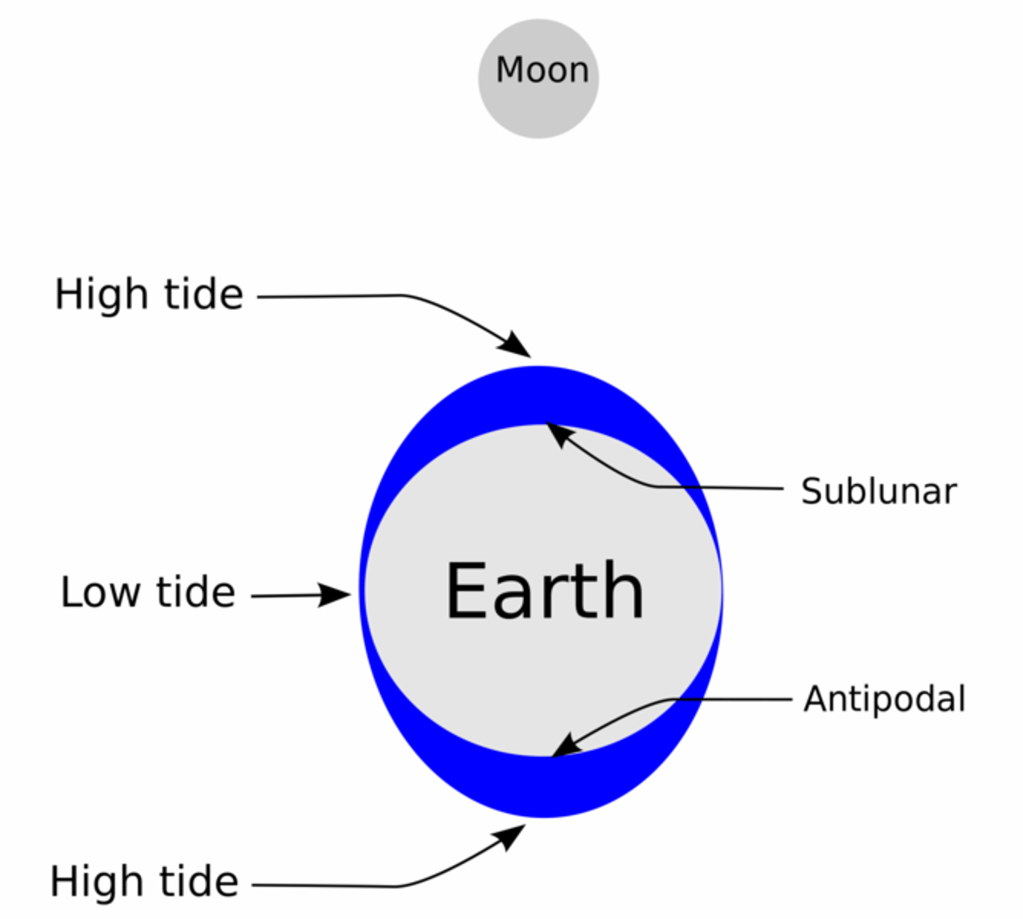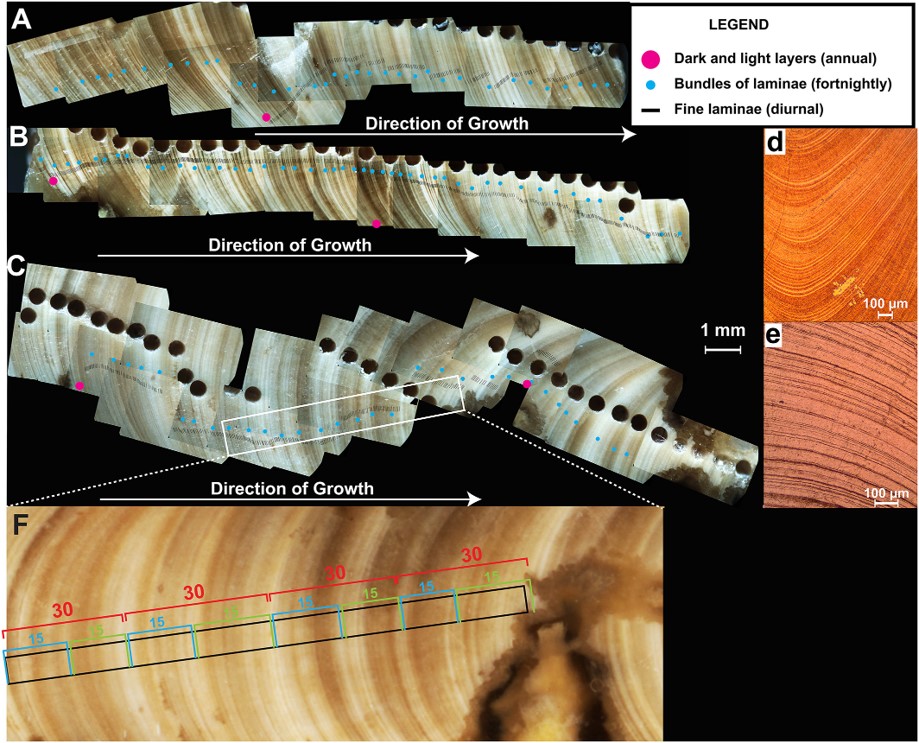Listen to Episode 138 on PodBean, YouTube, Spotify, or wherever you listen to your favorite podcasts!
Earth is not alone as it glides through space; we have a cosmic companion, ever present, whose impact on life on Earth is inescapable. This episode, we discuss the deep history and profound influence of The Moon.
In the news
Pterosaurs’ feather-like structures were more colorful than we knew
Strange glow on this fossil spider reveals unusual form of preservation
Deformed pollen might be a clue to ancient environmental stress
Early tetrapod had lizard-like long toes, perhaps for similar locomotion
Our Celestial Partner
Lots of planets have one or more moons; here on Earth, we have only one, and it is The Moon.
The Moon is quite large, with a diameter of ~3,400 km (2,100 mi), about a quarter the diameter of the Earth, making it one of the largest moons in the solar system, and the largest compared to its planet. The Moon’s orbit around, at an average of 384,000 km (238,000 mi) away, Earth takes 27.32 Earth days, and so does its rotation, such that the same side of the Moon always faces toward the planet.

Image by Orion 8, CC BY-SA 3.0
But the Moon is not just an accessory to Earth. The Earth and the Moon are a system, each influencing the other, and so we can’t fully understand life on Earth without considering the Moon. For example, the gravitational influence of the Moon modifies the Earth’s geomagnetic fields, as well as the “wobble” of the Earth’s axis over thousands of years. Most nights on Earth are lit thanks to the Moon reflecting sunlight onto the dark side of our planet. And, of course, the pull of the Moon’s gravity creates the regular cycling of the tides here on Earth.

Image by Chiswick Chap, CC BY-SA 3.0
All life on Earth has evolved under the influence of the Moon, and many organisms today react to its presence. Some predators hunt more successfully in the light of the full moon, while some others fare better on moonless nights when their prey can’t see them coming. Many marine organisms spawn under the light of a full moon. Entire ecosystems have adapted to thrive in tidal zones which fluctuate between being submerged and exposed in response to the Moon’s gravitational pull. In Arctic seas, where sunlight can be absent for months, plankton rise and sink in response to moonlight instead of sunlight. And, of course, we humans have based our daily and monthly activities off of the cycles of the moon for thousands of years.

Left: Barred owl at night by Wing-Chi Poon, CC BY-SA 2.5
Right: Coral reef at night by Cory Doctorow, CC BY-SA 2.0
Earth and Moon Through Time
So far as we can tell, the Earth has basically always had a moon. The Moon seems to have formed around 4.5 billion years ago, while the Earth itself was still forming, and evidence suggests our moon’s birth was a violent event.

Top: BOOM. Image from NASA.
Bottom: A simple representation of the giant-impact hypothesis by Citronade, CC BY-SA 4.0
That said, the Earth-Moon relationship has changed over time. Originally, the two bodies rotated independently, but as time has gone on, the Earth and Moon have been in a gravitational tug of war that has sapped rotational energy form both. Eventually, the Moon became tidally locked (that’s why we only ever see one side of it) and the Earth’s rotation continues to slow down to this day. These days, the Earth’s rotation slows by about 2 seconds every 100,000 years, and – as part of this same dynamic – the Moon drifts farther from the Earth by about 4cm per year. Thus, as we travel through Earth history, certain modern-day “rules,” such as the length of a day or the strength of the tides, have changed.

If you’re curious, this study finds that a Late Cretaceous day was only 23.5 hours long.
Image from de Winter et al. 2020
Featured image is The Moon by by Gregory H. Revera, CC BY-SA 3.0
More Moon
NASA Resources: The Moon; Tides; The Moon in Motion
Days are getting longer and the Moon is getting farther away
Tidal History and Future of the Earth-Moon Orbital System, 2021 (technical, open access)
The Moon and Life
The Moon’s influence on animals
Moonlight and coral spawning, 2021 (technical, open access)
Moonlight and plankton migration, 2016 (technical, open access)
Moonlight and larval fish growth, 2018 (technical, open access)
Moonlight and dung beetle navigation, 2019 (technical, open access)
The Cretaceous Day-Night cycle, 2020 (technical, open access)
Moon Origins:
The start of the Earth-Moon system, 2020 (technical)
A multiple-impact origin for the Moon, 2017 (technical, paywall)
A few fun videos we found:
When Will Earth Lock to the Moon?
What Happens if the Moon Crashes into Earth?
The Day the Dinosaurs Died (related to this episode’s Patron question!)
—
If you enjoyed this topic and want more like it, check out these related episodes:
- Episode 12 – The Geologic Time Scale
- Episode 26 – Astrobiology
- Episode 113 – Paleoclimate
- Episode 124 – Snowball Earth
We also invite you to follow us on Twitter, Facebook, or Instagram, buy merch at our Zazzle store, join our Discord server, or consider supporting us with a one-time PayPal donation or on Patreon to get bonus recordings and other goodies!
Please feel free to contact us with comments, questions, or topic suggestions, and to rate and review us on iTunes
One thought on “Episode 138 – The Moon”